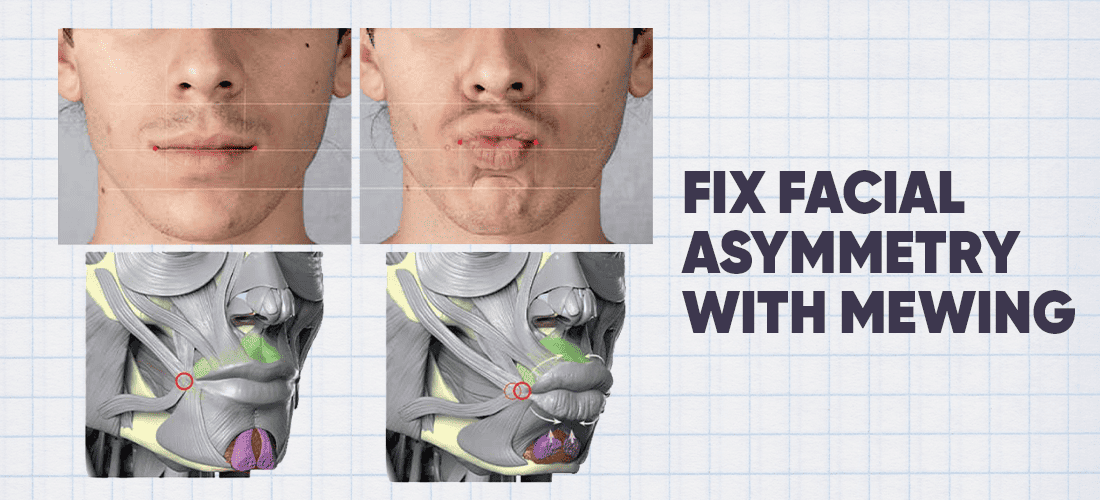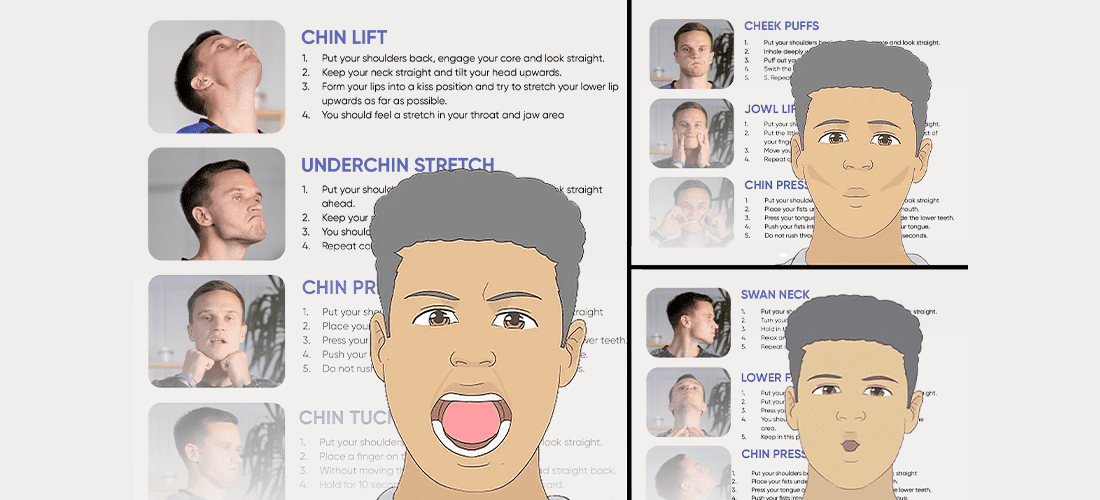
You’ve heard that there is a good side and a bad side to your face. But is anyone’s face actually symmetrical? The consensus is no.
Perfect symmetry doesn’t exist, but there are things we can do to improve facial features by observing how mewing works.
🔎 Revealed on this page:
- 📝 Tips on how to work on your facial structure with mewing.
- 📖 An extensive guide on facial asymmetry, causes, and how to fix asymmetrical mewing.
- 💪How mewing can help with an asymmetrical face.
Let’s see how it works!
What Does Facial Asymmetry Mean?
Look at yourself in the mirror, and you’ll notice that the left and right sides are not identical. Your features differ in size or position; for example, one ear may be bigger than the other, or the nose may be slightly bent towards one side.
Having features that don’t perfectly line up is called asymmetry and can actually add to the charm of your looks. However, in some cases, the asymmetry can be more prominent, leading to aesthetic issues and the desire to improve certain features.
Four Most Common Asymmetrical Face Causes
There are various causes of asymmetry ranging from genetics to improper sleeping position:
Genetics
Facial disharmonies often run in the family, and you have probably inherited all the imperfections that bother you. Look at your head and eye shape and your cheekbones, and you’ll find the same in other members of your family.
Lifestyle
Oddly enough, evidence shows that sleeping on your stomach can influence facial symmetry. If one side is constantly flattened against the pillow (for example, the left side), more lines and wrinkles will appear, and face volume can decrease.
Dental Work
Removal of teeth is the most usual cause of asymmetry caused by dental procedures. Also, dentures and veneers can affect physical appearance – sometimes positively and sometimes negatively.
Injury
Childhood injuries, especially to the middle face area, have a strong influence on the development of the face and its symmetry. Children develop fast, and that’s when the most significant changes occur.
Can Mewing Help to Fix an Asymmetrical Face?
Mewing is a method of practicing correct tongue posture where the tongue is raised to the roof of the mouth and lightly pressed to the palate. Mewing gradually changes your face by aligning the lower jaw and improving the overall facial structure.
The list of mewing advantages is long and includes strengthening facial muscles and relieving symptoms of mouth breathing and sleep apnea. You can also improve your jawline by mewing properly and consistently. All this helps refine facial symmetry to a certain degree without involving surgery and, thus, pain.

What Exactly Is Asymmetrical Mewing?
The correct technique requires both sides of your tongue to put pressure on the palate equally. When one side of the tongue is more engaged, it is considered asymmetrical mewing. It can cause the dominant side of the face to develop better.
You should be careful about practicing the advanced hard mewing method if your tongue pressure isn’t properly balanced.
Check our page to find all mewing exercises explained in a way that will help you avoid doing asymmetrical mewing. Even better – watch a YouTube video or two to get the gist of the proper mewing technique.
4 Steps to Correcting Asymmetrical Mewing
For maximum results, you need to learn how to properly rest your tongue while mewing. Also, you should pay attention to all the possible mewing mistakes to avoid asymmetrical tongue pressure.
The following tips will help you realign your facial bones and keep your skin tight with proper mewing:
Balance the Tongue Posture
Use a mewing device or chewing gum and place it on the palate on the weaker side. Stick it just behind the first molar and lift the tongue. You will immediately feel how the tongue reacts to a foreign body and pushes harder against it.
Practice it for 20 – 30 minutes a day.
Stretch
Do stretching exercises for your neck and correct your upper body posture. This will relax the muscles and allow your tongue to move better.
Slide the tongue
Lift the tongue and slide it starting from the back of the throat toward the ridge of the palate. Consciously spread the pressure evenly on both sides of the tongue. This will train you to apply equal pressure at all times.
Cave exercise
Keep your tongue suctioned to the palate and open the mouth. You’ll notice that the weaker side will fall slightly. Consciously train yourself to keep both sides of the tongue firmly suctioned to the palate.
Do it 3 times and hold the cave position for 15 seconds.

Conclusion
Everyone has some asymmetry in their features that adds character and attractiveness to the face. A perfectly symmetrical face does not exist in reality and is not something you should aspire to.
However, asymmetrical mewing can cause uneven facial development and narrow the effects of the method. Try keeping a balanced use of both sides of the tongue to reinforce mewing results to improve overall facial asymmetry successfully!



